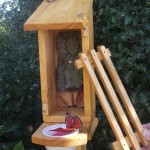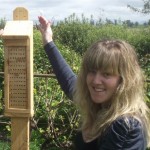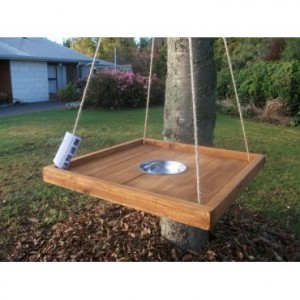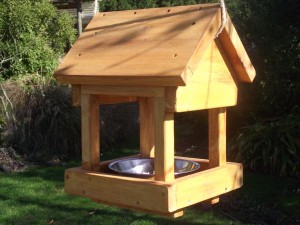Butterflies
Imagine having a mini butterfly conservatory in your own back yard, or to be able to regularly experience beautiful butterflies dancing in your garden, in amongst the flowers and sun? It may seem a bit far-fetched, but in reality, butterfly gardening is an attainable goal. A perfect mix of gardening and interest in butterflies, this form of butterfly focused gardening is a practical way to be involved in butterfly conservation, as well as raising pollinator awareness.
By creating attractive environments for pollinators in an urban setting, you are providing essential habitat for butterflies, birds and bees. These essential habitats may not be readily available in a setting such as a new subdivision, unless otherwise provided or helped to develop.
Butterfly gardens are not substitutes for wild habitat, but are important in their own right and certainly do contribute to the survival of butterflies.
Butterflies are very interesting and beautiful to observe and when you create and foster a garden that includes butterflies you are set to experience a piece of pure, wild nature in your own backyard!
Take time to plan and plant in 5 easy steps!
Step 1: Be familiar with butterfly species in your area.
One important first step is to identify the kinds of butterflies that tend to normally live near your home. This can be done by observing butterflies in the area yourself, or by consulting a butterfly ID guide. By determining what kinds of butterflies are present, you will be better able to plant the appropriate nectar plants, and important larval food sources.
Step 2: Design for sunshine and shelter.
Butterflies love the sun. Your garden must have enough sunlit areas to attract them and keep them warm and active. Although the vast majority of butterflies like to bask in the sun, some are shade-loving butterflies and will benefit from garden areas protected from the sun. An ideal butterfly garden should also have areas that provide shelter from the wind. Consider providing a purpose built butterfly shelter giving migrating and hibernating butterflies a helping hand by providing them a place to live. When butterflies migrate they need to find shelter from bad weather. Usually they seek shelter in cracks of trees or buildings. Some butterflies will hibernate in the winter and need shelter to protect them from winter cold.
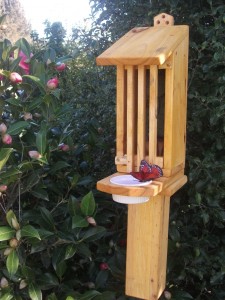
This butterfly house gives migrating and hibernating butterflies a helping hand by providing them a place to live.
Creative Woodcraft offers purposely designed butterfly houses that will provide habitat for migrating and hibernating butterflies. Butterflies will thrive better if they do not have to fight strong wind while feeding on nectar or while looking for plants on which to lay their eggs. Trees and shrubs can act as wind barriers and still be aesthetically pleasing in a garden.
Step 3: Plant nectar food sources.
Support nzButterfly.info.
1 It keeps the website online
2 It gives you a way to experience the magic of butterflies close up plus do your small part towards conserving and promoting the population growth of New Zealand’s butterflies.
As adults butterflies not only love the sun, they also love the nectar of flowers, a sweet substance that makes up their diet. Design your garden so that it has blooming plants from late spring to early autumn. A continual supply of flowers is essential to accommodate different butterflies, appearing at different times, with specific preferences. Also try to plant a variety of nectar rich flowers, such as the butterfly favourites of buddleia (butterfly bush),milk weed, and black-eyed susan. Hybrid garden varieties, such as those of roses and lilies, are not usually a good choice of flower because they tend to be low in nectar content. Butterflies will be attracted to even a small area if it is dense with nectar sources, shortening the search time for nutrition. Butterflies are often attracted to large and bright red, orange, yellow, pink, blue or purple flowers. Plants that have a trumpet or tube shaped flower and have a landing platform for the insect are desirable. Such flowers include zinnia, goldenrod, honeysuckle and daisy.
Step 4: Plant larval food plants.
Female butterflies are often very particular about where they lay their eggs, and will often spend a long time searching for the right plant. If you can make such plants available, such as milkweed, aster, lupine, violets and black-eyed susans, they should guarantee butterfly attendance, and the occurrence of a whole butterfly life cycle. The newly hatched caterpillar, or larva will feed on the food source and when they have turned into an adult butterfly it is most likely they will stay to feed on the garden’s nectar sources.
A butterfly garden can also be a mix of flowers and vegetables. For example planting carrots, parsnips, or dill should encourage certain butterflies. The butterfly larvae will likely devour these vegetables, so it would be wise to set apart another vegetable patch to grow food for your own consumption. Weedy plants, such as thistles or nettles, on which some butterflies feed, are also in demand. Such plants should not be dismissed and can be put in the back of the butterfly garden, away from any visiting people. Certain trees and shrubs, such as willows, and cherries, are larval food and can also serve as wind blocks and shelter. Once again, it is important to educate yourself about which butterflies are most likely to appear in your area, so that you can cater to their specific food needs, as larva and adults.
Step 5: Stop pesticide use.
Using pesticides will kill butterflies, as well as other important and beneficial insects. Please refrain from using pesticides, and if a problem arises, try an organic alternative.

